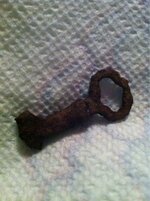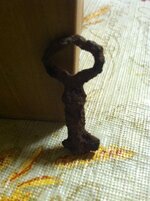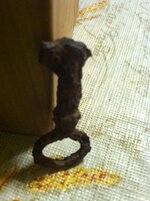treasurehunter101
Sr. Member
- Jan 14, 2014
- 363
- 67
- Detector(s) used
- Learned on Bounty Hunter Junior, then Tracker IV, and now using the Fisher F2
- Primary Interest:
- Metal Detecting
Hey guys I was metal detecting my yard today since the snow melted away and I found lots of linoln memorials and a 1944 wheat penny. And nails and all the junk you guys know the drill well anyway I also came across this wierd thing I don't have any clue what it is can you help me please?? Thanks ps my house was built in the 1890's.












